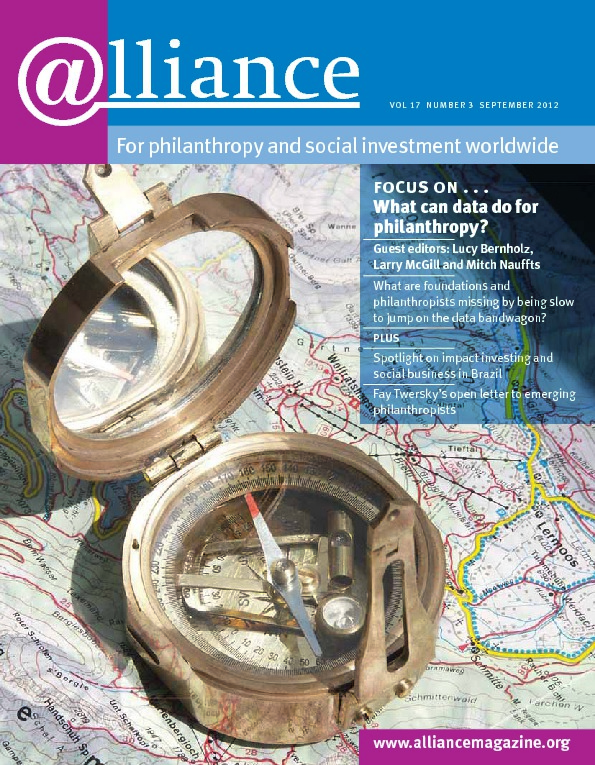Data in the sphere of development has been effectively used for big picture questions like measuring levels of poverty and malnutrition or assessing the health and educational standards of a country or region’s population. For those of us who have been working on a smaller scale on issues like urban poverty, data about cities is very silent on issues related to poverty, slums and all forms of informality. Information is never accurate, it is always outdated, and it is seldom comprehensive. Often just a few informal settlements will be included. At the Society for the Promotion of Area Resource Centres (SPARC) and Slum Dwellers International (SDI), we have found that using the poor to collect and record data about themselves both develops their capabilities and produces better data.
SPARC and SDI use what we call ‘enumerations’ – data about slums and their land and amenities status, and data about households. We find that this is a powerful tool. First, it creates the organizational form of social movements: when everyone answers the same questions about who they are, what they do in the city, where they live and what their challenges are, it produces an identity; it produces solidarity and it forms the basis for developing a consensus on collective priorities. It also forms the basis for dialogue with the city or state, both to legitimize data that the poor collect about themselves and to define what the development issues are and where investments should be made. Because the data can be aggregated and disaggregated, they can also become a benchmark of impact and the value of investments.
In many cases, foundations have assisted us in developing the infrastructure and capability to design, collect and store data. Often grantmakers need to see the impact and value of slum dwellers collecting information before they become convinced about financing the process. Generally, they see the collection, management and use of data as activities for researchers, academics and state agencies; their initial view of communities collecting data is that it is an unnecessary duplication.
 However, we have been able to demonstrate that communities can often collect better data about themselves and use it more effectively than professionals can. Not only would it be extremely expensive to contract an organization, say, to undertake interviews with the inhabitants of 200 informal settlements from all over Namibia, or to map and produce profiles of 330 informal settlements in Cuttack (India), but the professionals would face formidable obstacles because of their lack of local knowledge. They would be working in areas with no maps, no lists of buildings, often no street names or details of where the settlement’s boundaries are. There would be pressure on interviewers to work quickly. Furthermore, they may not speak the language of those they interview, which adds to the costs and to the difficulties of getting accurate responses. They would also have to contend with suspicion from people who feel threatened by outsiders asking questions – for instance, those who fear eviction, those engaged in illegal activities, or illegal immigrants.
However, we have been able to demonstrate that communities can often collect better data about themselves and use it more effectively than professionals can. Not only would it be extremely expensive to contract an organization, say, to undertake interviews with the inhabitants of 200 informal settlements from all over Namibia, or to map and produce profiles of 330 informal settlements in Cuttack (India), but the professionals would face formidable obstacles because of their lack of local knowledge. They would be working in areas with no maps, no lists of buildings, often no street names or details of where the settlement’s boundaries are. There would be pressure on interviewers to work quickly. Furthermore, they may not speak the language of those they interview, which adds to the costs and to the difficulties of getting accurate responses. They would also have to contend with suspicion from people who feel threatened by outsiders asking questions – for instance, those who fear eviction, those engaged in illegal activities, or illegal immigrants.
Through our advocacy over time, more and more cities and government institutions have been commissioning data gathering projects from organizations of the poor and the NGOs that work with them. They have seen that the organizations that conventionally collect data don’t know how to work in slums, and the results of community-driven exercises have surprised them. In Old Fadama in Accra, for example, the enumerations showed a much larger population than local government estimates; it also showed the scale of residents’ involvement with the local economy and the extent of public infrastructure and services. This documentation helped discourage successive governments from their intention to evict. By contrast, the enumerations in Joe Slovo in Cape Town showed a smaller than expected population, which made in situ upgrading, which locals had been agitating for, more feasible. (Photo shows measuring exercise at Joe Slovo in Cape Town.)
These are just two examples of the sort of detailed and accurate picture of informal settlements that can emerge when the poor collect data about themselves, and the uses to which this can be put.
Sheela Patel is director of SPARC and chair of SDI. Email sparcssns@gmail.com
For more information
http://www.iied.org/why-enumeration-counts-documenting-undocumented





Comments (0)